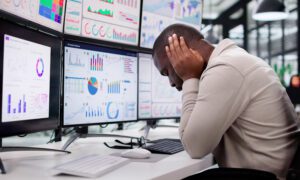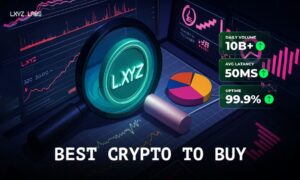In the world of finance, the age‑old idea of an individual trader working with firm money – known as proprietary trading – is undergoing a quiet revolution. The dual themes of prop funding (that is, access to firm capital for traders) and the future of prop trading are being rewritten by technology, artificial intelligence (AI) and data monetisation. In this blog we’ll explore how these forces are reshaping how traders gain fund access, how firms operate, and what it might mean for you.
Introduction: A New Chapter for Prop Trading
Gone are the days when an ambitious trader had to beg for capital, pay hefty entrance fees, or work under opaque rule books. Today, technology is lowering the barrier to participation and flipping the incentives of the industry. The traditional model of a prop firm simply charging traders and hoping most fail is being challenged.
In this blog we’ll dig into how the convergence of tech, AI, and data monetisation are driving the next wave of change in prop funding and prop trading – why this matters, how it works, and what you should be looking out for as a trader or an investor.
What is Prop Trading and Prop Funding?
Understanding the basics
First, a quick refresher. Proprietary trading (or “prop trading”) refers to a firm trading financial instruments (stocks, currencies, commodities, derivatives) using its own money rather than client funds.
In the retail‑prop space, many firms provide talent (traders) with firm capital after a test or evaluation phase. If the trader passes the rules and makes a profit under conditions, they gain access to the funds and share profits with the firm.
Why the model matters
- For the trader, prop funding offers the chance to trade larger amounts than personal capital allows.
- For the firm, it gives access to trader talent and the possibility of profit split or other revenue mechanisms.
- But in recent years, the mismatch of incentives (firms making money from traders failing, opaque rules, high upfront fees) has drawn criticism. The industry has been ripe for disruption.
Section 1: Technology as the Enabler
Digital platforms and real‑time infrastructure
Technology makes scalable prop funding possible. Platforms today can:
- Onboard traders globally and run evaluation challenges remotely.
- Provide real‑time monitoring of trading performance and risk metrics.
- Automate payouts, risk rules, drawdown limits and account scaling.
Algorithmic risk and execution tools
Tech isn’t just about onboarding. Prop firms are increasingly using algorithmic risk‑management tools to monitor drawdowns, enforce rules, and even detect abnormal trading patterns. These tools ensure that the prop firm capital remains safeguarded while allowing generous terms for traders who behave well.
Cloud, connectivity and global access
Another key point: the internet and cloud infrastructure mean that prop funding is no longer limited to London, New York or big banks. A trader based anywhere in the world can join a global prop challenge and get funded in a matter of days. This democratises access and broadens the talent pool.
Section 2: AI – The Catalyst for Smarter Prop Trading
Data‑driven trading strategies
AI relies on data. When firms collect and analyse large volumes of trader behaviour (trade size, timing, instruments, win/loss distribution, reaction to news), they can identify patterns both in winning trades and losing trades. These patterns feed models that can predict risk, optimise execution, or even automate trading.
Aligning incentives via AI
Traditional prop models often had misaligned incentives: the firm made money if many traders failed while the trader bore the risk. With AI and data, firms can flip the model to one where success by traders actually strengthens the system and increases profitability for both sides.
Automation, assistive tools and hybrid models
AI doesn’t just live behind the scenes. It may provide:
- Real-time alerts to traders about risk metrics
- Suggestions or insights based on historical winning patterns
- Copy‑trading / social trading platforms where retail traders can tap into data‑powered strategies
Section 3: Data Monetisation – The New Revenue Model
Why data is valuable
When a prop firm collects vast amounts of anonymised trading data, it becomes a source of intelligence: which strategies work, under what risk conditions, how traders behave in unexpected markets, what drawdowns look like by instrument. This data can be leveraged:
- Internally to improve the firm’s trading algorithms.
- Sold or licensed to institutional partners who value alternative data.
- Used to enhance the prop firm’s offering to traders (better rules, more tailored challenges, scaling options).
The model in practice
Some modern prop firms offer free entry to the evaluation; traders only pay an activation fee after passing. Every trade from every trader (pass or fail) is captured and fed into the data engine. The engine then backs live trading accounts and these accounts use the data-derived strategies for profit.
What this means for traders and firms
- For traders: Better chance of access, a system aligned with performance.
- For firms: A scalable model where risk is diversified and long-term value is derived from data.
- For the industry: A shift from “pay to play” evaluation to “performance and data contribute to a broader ecosystem”.
Section 4: The Changing Landscape of Prop Funding
Lowering barriers to entry
With modern models, the barrier to access firm capital is lower. No upfront fee means more traders can try their hand.
Transparent rules and fairer models
The new generation of prop firms emphasise transparency: clear drawdown rules, clear profit targets, published model performance.
Risk‑management evolution
Risk rules are becoming smarter. Thanks to technology and data, firms can impose real‑time risk controls and adjust instrument limits dynamically. This means greater trust for traders and less surprise when rules bite.
Scaling and growth opportunities
As firms gather more data and improve their algorithms, they can offer bigger accounts, better profit splits and faster scaling paths for top performers.
Section 5: Why This Matters for Traders and Investors
For aspiring traders
If you’re a trader seeking firm capital via a prop funding model, you should pay attention to:
- The fee structure: free entry vs upfront payment.
- The profit split: how much you keep vs firm share.
- Clear, fair risk rules
- Transparency: published stats, performance metrics.
- Data‑backed models: firms that rely on data may offer better long-term scaling opportunities.
For investors and firms
Data monetisation offers a new angle:
- The firm’s competitive edge becomes their data engine and how well they convert trader behaviour into algorithmic performance.
- The scaling potential is higher – more trader participation means more data, better models, more profit opportunities.
- The alignment between trader success and firm profit is stronger.
Industry impact
Overall the shift means:
- More inclusive access globally
- Better alignment of interests between firms and traders
- A move away from “pay‑to‑play” evaluation towards “performance and data contribution” models
- Greater transparency, which builds trust in the industry and attracts more talent/investors
Section 6: The Role of AI, Data and Tech in the Future
AI-powered trader analysis
Firms will increasingly use machine learning to evaluate trader behaviour even during challenge phases, estimating a trader’s potential beyond simple profit targets.
Data feedback loops and refinement
As more traders join, the dataset grows richer. AI models refine their predictions, trading strategies improve, risk rules optimise. This creates a virtuous loop.
Tech-enabled global reach & lower friction
Technology will continue to lower friction: mobile onboarding, global payment systems, real-time dashboards, instant scaling—all become standard.
New monetisation channels
Data monetisation isn’t just internal. Firms may offer:
- Copy-trading platforms
- Subscriptions or licensing of aggregated/trading-signal data to institutional clients
- Hybrid prop + fund models
Section 7: Navigating Challenges and Risks
Model risk
Even the best models can fail. Data-driven strategies are only as good as the underlying assumptions and market regimes.
Trader behaviour & moral hazard
Some traders may take unnecessary risk just to prove themselves. Firms must calibrate incentive structures carefully.
Regulatory & compliance issues
Data privacy, algorithmic trading oversight, cross-border payouts, licensing – all matter.
Data bias and fairness
If models are trained mostly on a subset of traders, new traders might find the rules or evaluation skewed. Fairness in challenge design and risk rules remains essential.
Market conditions
Extreme stress or structural changes in markets can affect algorithmic performance, impacting payouts, scalability, and trust.
Section 8: How to Choose a Modern Prop Funding Model
Criteria to evaluate:
- Up-front cost: Prefer free or minimal entry.
- Profit split: Higher splits favour traders.
- Risk rules clarity: Clear drawdown limits and trading restrictions.
- Transparency: Published stats, payout history, community metrics.
- Data & tech infrastructure: Emphasis on data monetisation and algorithmic enhancement.
- Scaling opportunities: Ability to grow your capital allocation.
- Payout mechanisms: Frequency, methods, minimums.
- Accessibility: Open globally, no undue restrictions.
- Support and fairness: Good support and no hidden clauses.
Section 9: Looking Ahead – What the Future Holds
More inclusive talent sourcing
Lower barriers allow talented traders from emerging markets access to firm capital.
Hybrid models: prop firm meets hedge fund
Retail talent pipelines feeding firm algos, which feed into institutional products.
Increased use of alternative data
Beyond trade data, social sentiment, news-flow, macro events, even behavioural data will be incorporated.
Real-time adaptation of risk rules
Machine-learning models will help adjust risk rules on the fly, making challenges dynamic and fairer.
Greater transparency and accountability
Market demand and competition will push firms to publish more metrics and performance dashboards.
Section 10: Final Thoughts – Is This the Right Time to Join?
If you’re a trader with skill, discipline, and ambition, the technological shift in prop funding and prop trading is good news. Modern firms offer:
- No upfront fee or minimal barrier
- Performance-aligned incentives
- Contribution to a data engine that powers further capital
- Tech-enabled global access
Success still demands discipline, risk control, and consistent performance. Technology and data give you a better platform, but they don’t guarantee profits.
For firms and investors, data is king, alignment matters, and tech is the enabler. The days of “pay to play” prop models are fading; the future is “trade to contribute, succeed to scale.”
In Summary
- Prop funding is evolving: free entry, aligned incentives, data-rich models.
- Prop trading is being reshaped by technology: real-time systems, cloud access, global onboarding.
- AI acts as the catalyst: analysing trader behaviour, powering algorithms, refining risk.
- Data monetisation is the revenue engine: every trade counts, whether you pass or fail.
- Modern firms demonstrate the shift: aligning trader success with firm profit.
- The future: inclusive access, hybrid models, dynamic risk control, and greater transparency.


































